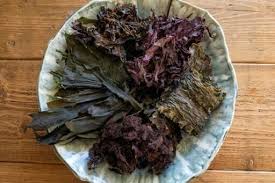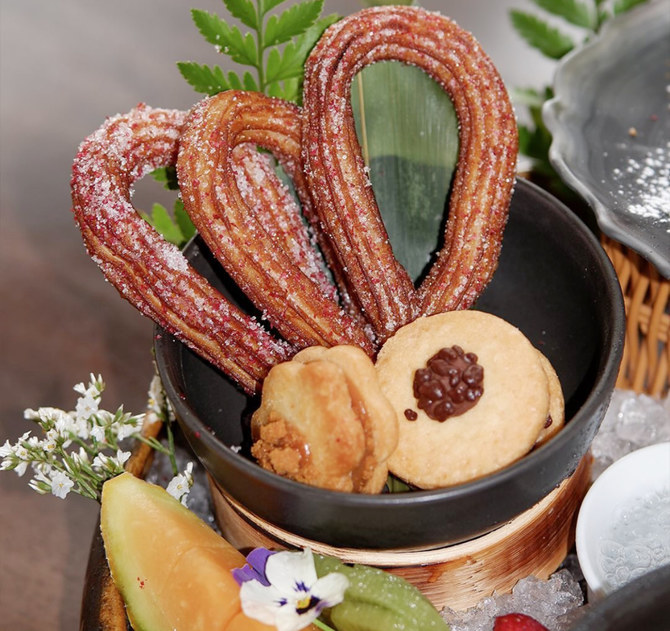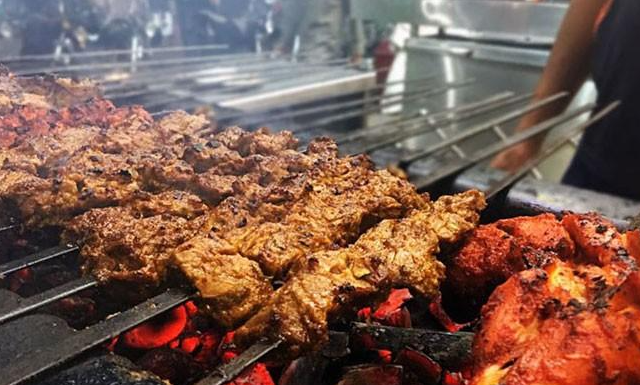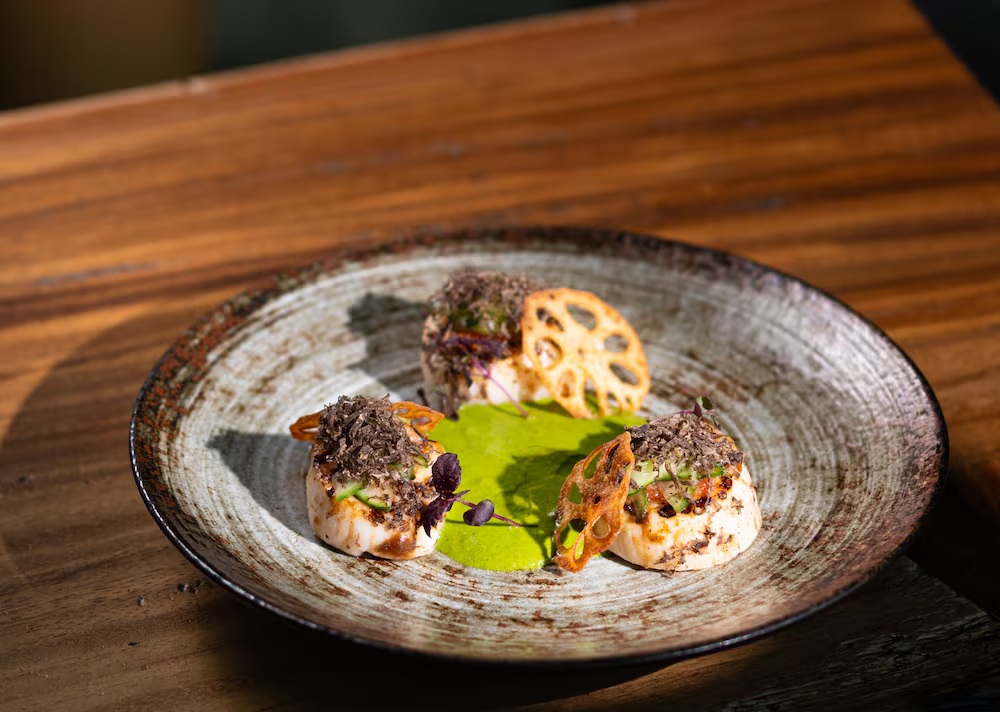Monitoring Desk
“Who wants to climb a tree?” asked Shacksbury Cider co-founder David Dolginow, just as the last morning fog ceded to a blue October sky. Behind him, a 150-year-old barn leaned into a grassy slope, where ripening fruit hung from a row of apple trees. That day, the staff of the Vermont hard cidery had abandoned their fermenters and canning line to forage for wild and feral apples on a historic hill farm.
It’s part of Shacksbury’s Lost Apple Project, a years-long quest to discover flavorful fruits among thousands of apple trees growing untended in Vermont’s landscape. Some are truly wild, a fallen seed that survived harsh winters and hungry deer to become, improbably, a full-grown tree. Others are feral trees planted long ago by a farmer, then left to grow gnarled and strange with time. Along with a small handful of cideries and distilleries in the United States, Shacksbury seeks to turn those wild and feral fruits into complex drinks.
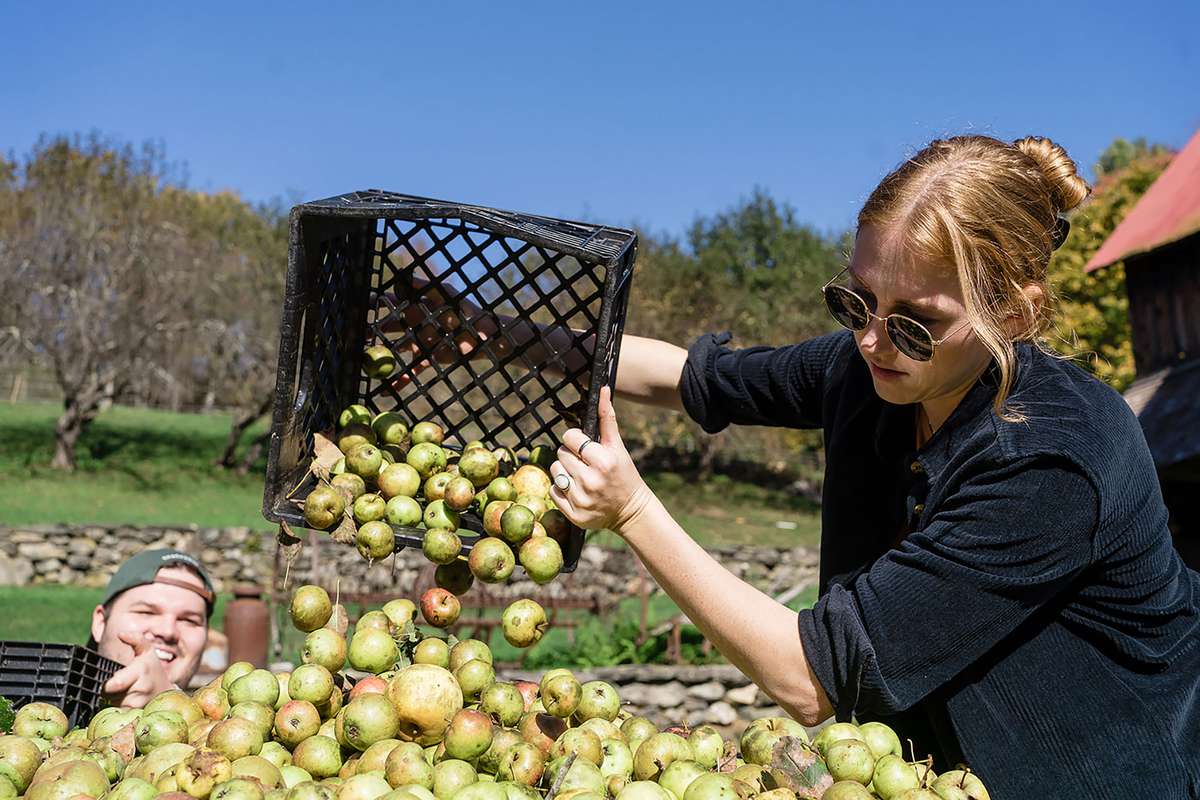
“You’re looking for flavor density, then acidity, sugar, and tannins,” explained Shacksbury president Colin Davis, who founded the cidery with Dolginow in 2013. At first Dolginow and Davis would just spot untended trees by the road and pull over to taste the fruit. As word got out about their foraged-apple cider, nearby landowners started calling to report funky old trees they’d found deep in the woods; now, tips come in via the cidery’s Lost Apple Registry.
On the mountain farm where the Shacksbury crew gleaned apples in October, Davis clambered into a tree covered with knobby, yellow-green fruit. He shook the limbs hard, showering apples onto a tarp spread across the grass. Davis picked one up to taste. “It’s got kind of a vanilla flavor, and it’s chalky — those soft, chalky flavors are good for cider,” he said.
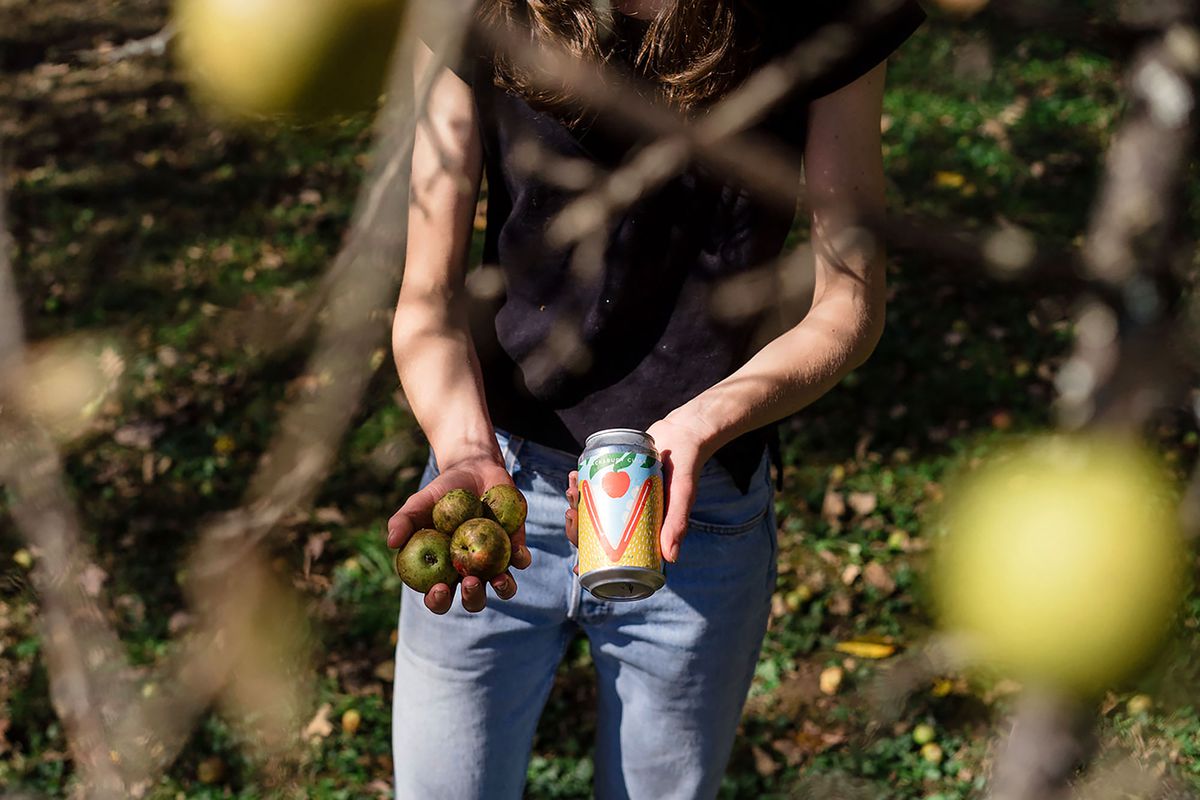
Related: Soft-Serve Hard Cider is Autumn’s Answer to Frosé
Just 20 or 30 cideries in the United States are working with wild and foraged fruit, estimated New York cidermaker Andy Brennan, founder of Aaron Burr Cider and the author of the 2020 book Uncultivated: Wild Apples, Real Cider, and the Complicated Art of Making a Living. Purchasing a few tons of apples at a commercial orchard is a simple transaction compared with gathering fruit from hillsides, abandoned farms, and forest clearings. Cultivated apples are sweeter and juicier, sometimes yielding twice as much cider for every pound of pressed fruit. But there’s more to great cider than lots of apple juice.
Apples don’t grow “true to type,” so if you plant a seed from your lunchtime Honey Crisp, the resulting tree will bear a mystery fruit that may taste nothing like the original. Biting into a wild apple is a surprise every time. The fruit could be sweet, or it could be bitter, tannic and dry. And even a cultivated apple variety will begin re-wilding after a few years of neglect, Brennan said, reverting to hardy traits that are rare in well-tended orchards.
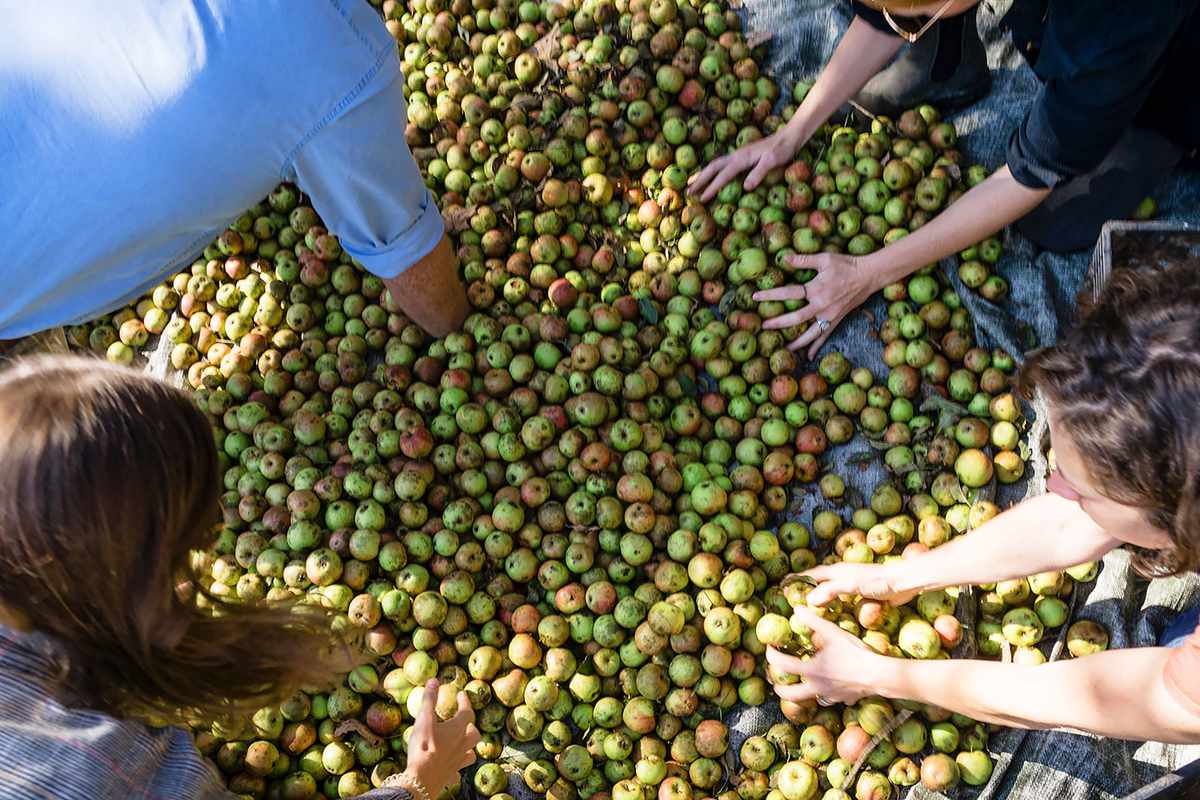
“I forage from orchards that have been deserted, and I’ve seen Golden Delicious go feral,” Brennan said. Unlike cultivated apples, an abandoned tree will often produce fruit just every other year. Roots wiggle deeper into the soil, adding earthy nuance and minerals to the fruits’ flesh. The apples grow smaller, with thickened skin.
“As skin gets tougher it starts producing more tannin, and tannin is great for aging cider,” Brennan said, explaining that cider made from feral apples can result in more nuanced taste. “The density of flavor is two or three times that of cultivated cider.”
After gathering apples into totes and crates, the Shacksbury crew hiked to a high meadow with views across the White River Valley, where autumn weather was kindling explosive color in the surrounding forest. A cooler held iced cans of Deer Snacks, the annual cider Shacksbury makes with each season’s blend of foraged and orchard fruit.
Related: 40 Sweet and Savory Apple Recipes for Fall
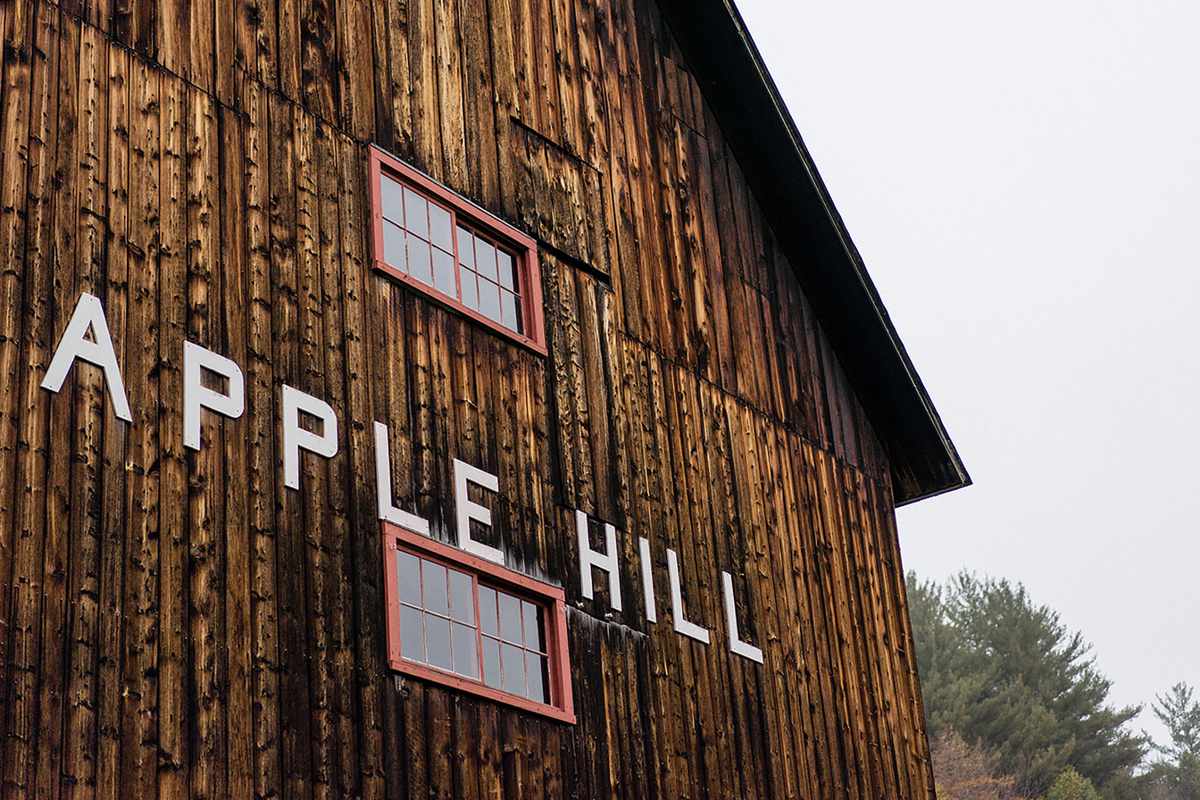
Fermentation is spurred by wild yeasts clinging to the apples; the cider is bright and dry, with a tangy kicker that lands on the palate like sweet-and-sour candy. “That’s one of my favorite trees,” said Dolginow, pointing to spidery apple tree decked with fruit the hue of a spring green Crayola. “It’s got that kind of bitter tannin that cidermakers lust after.”
Every so often, the Shacksbury co-founders find a wild or feral fruit they love enough to make their own, working with their orchardist partners at Windfall Orchards and Sunrise Orchards to graft tree cuttings onto rootstock, a process called propagation that brings once-wild varieties back into the cultivated fold. Dolginow and Davis have propagated 11 varieties so far, giving them names like Gill’s Peach and Bandito.
Most wild and feral apples, though, will remain quietly anonymous—even the nearby tree whose tannins Dolginow praised. After lunch, the crew shook a few more of its apples into their now-overflowing crates. Stray fruit crunched underfoot, turning the air sweet and faintly rotten. “Let’s call it a day,” Dolginow said. “We’ll leave plenty of snacks for the deer.”



